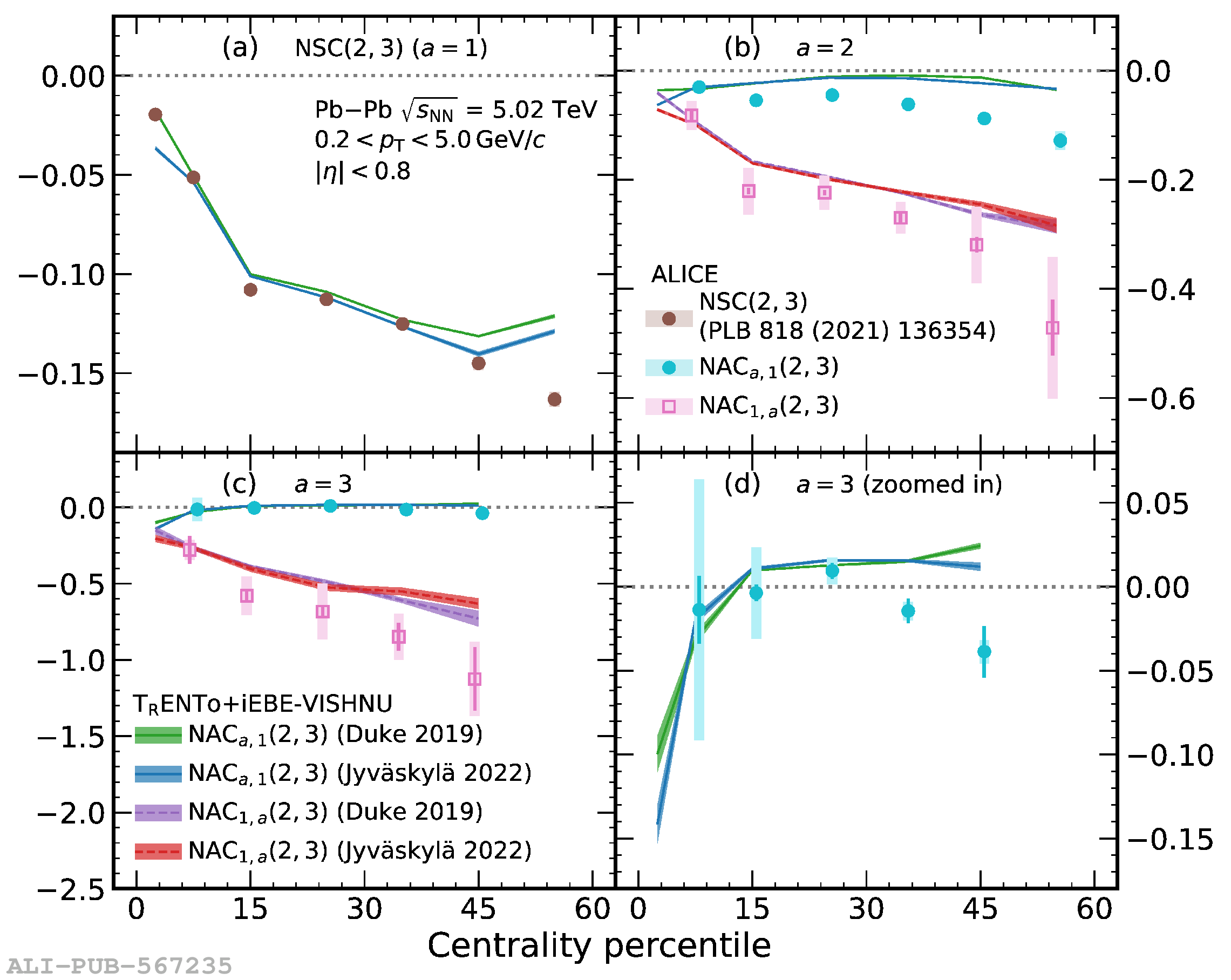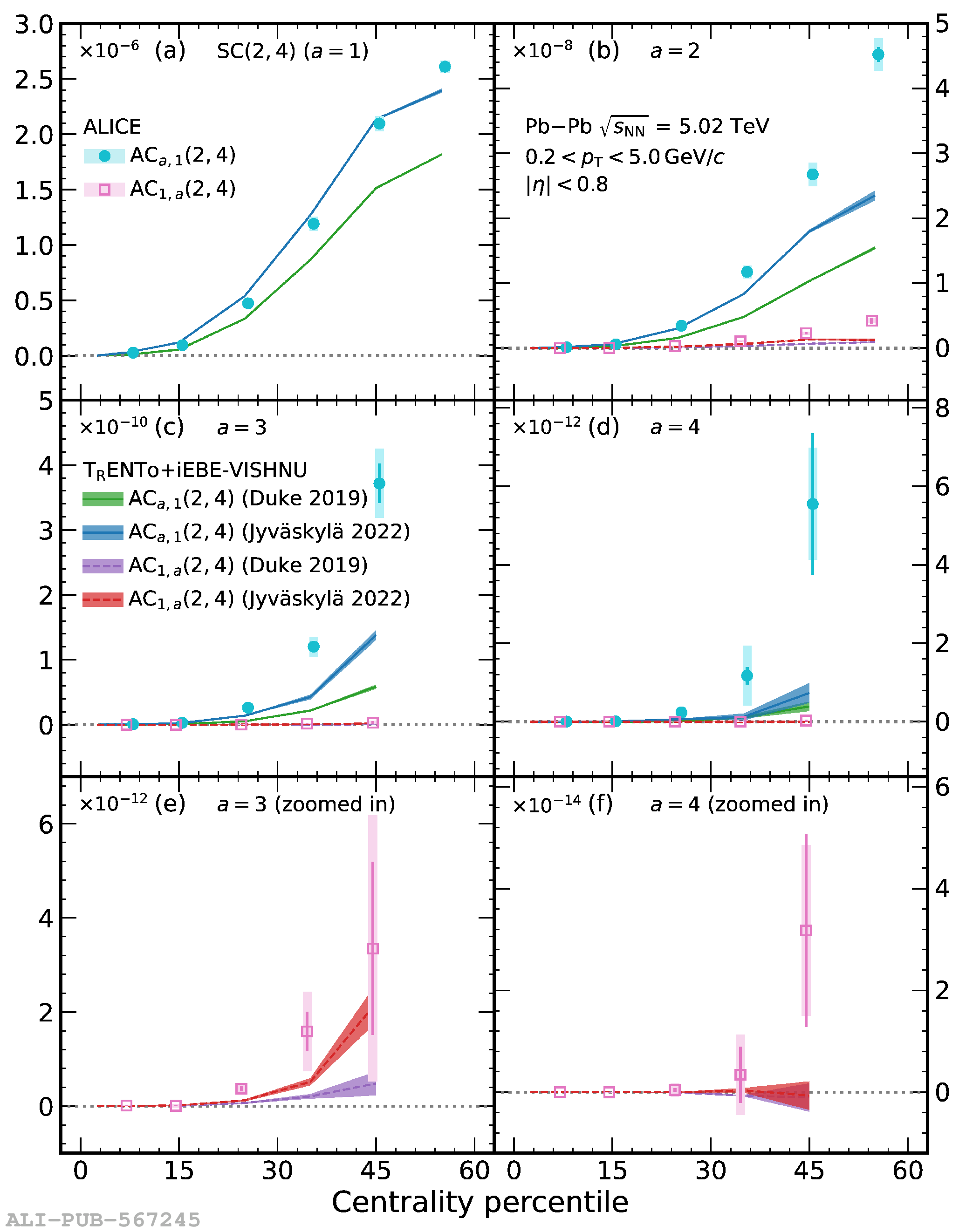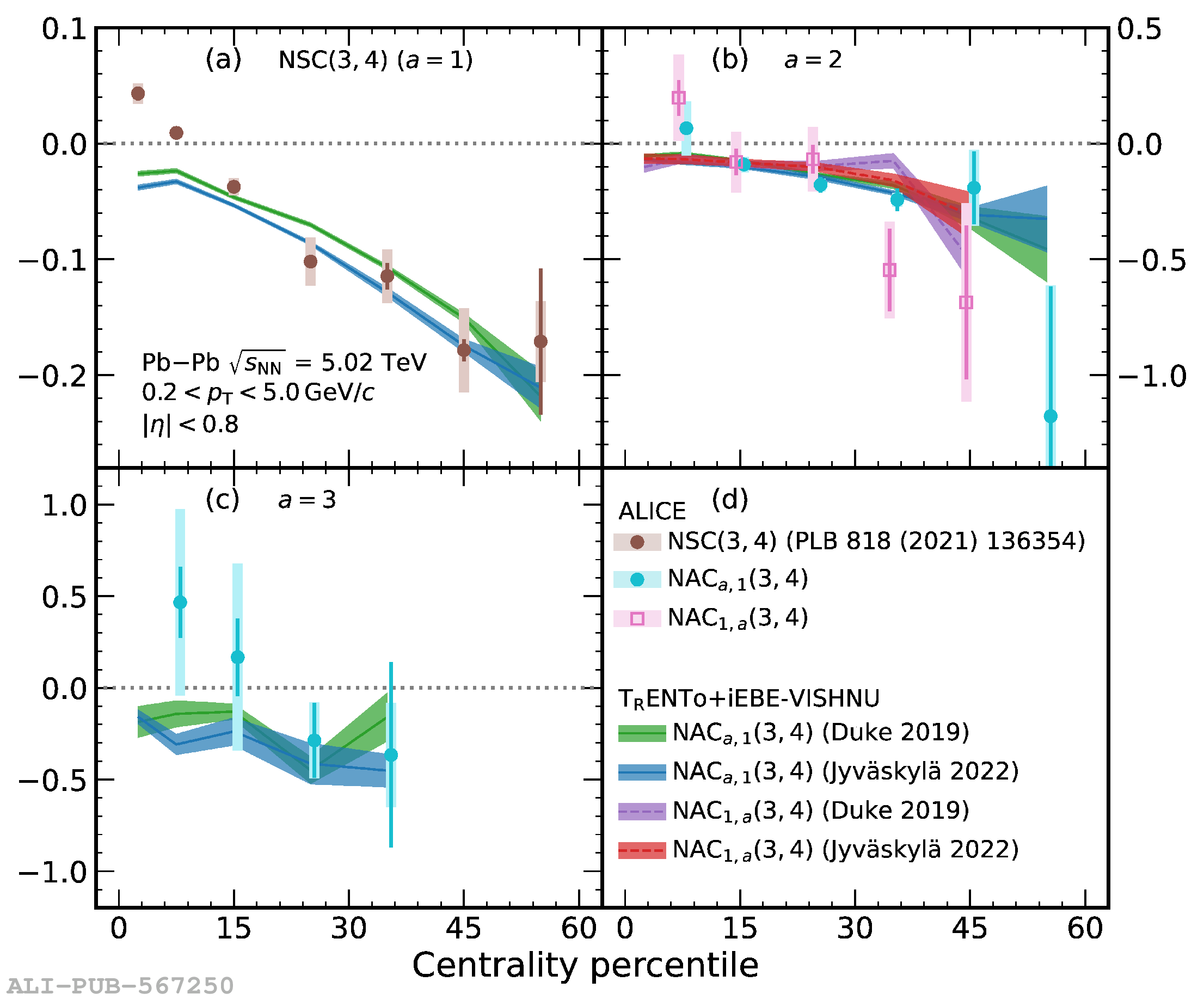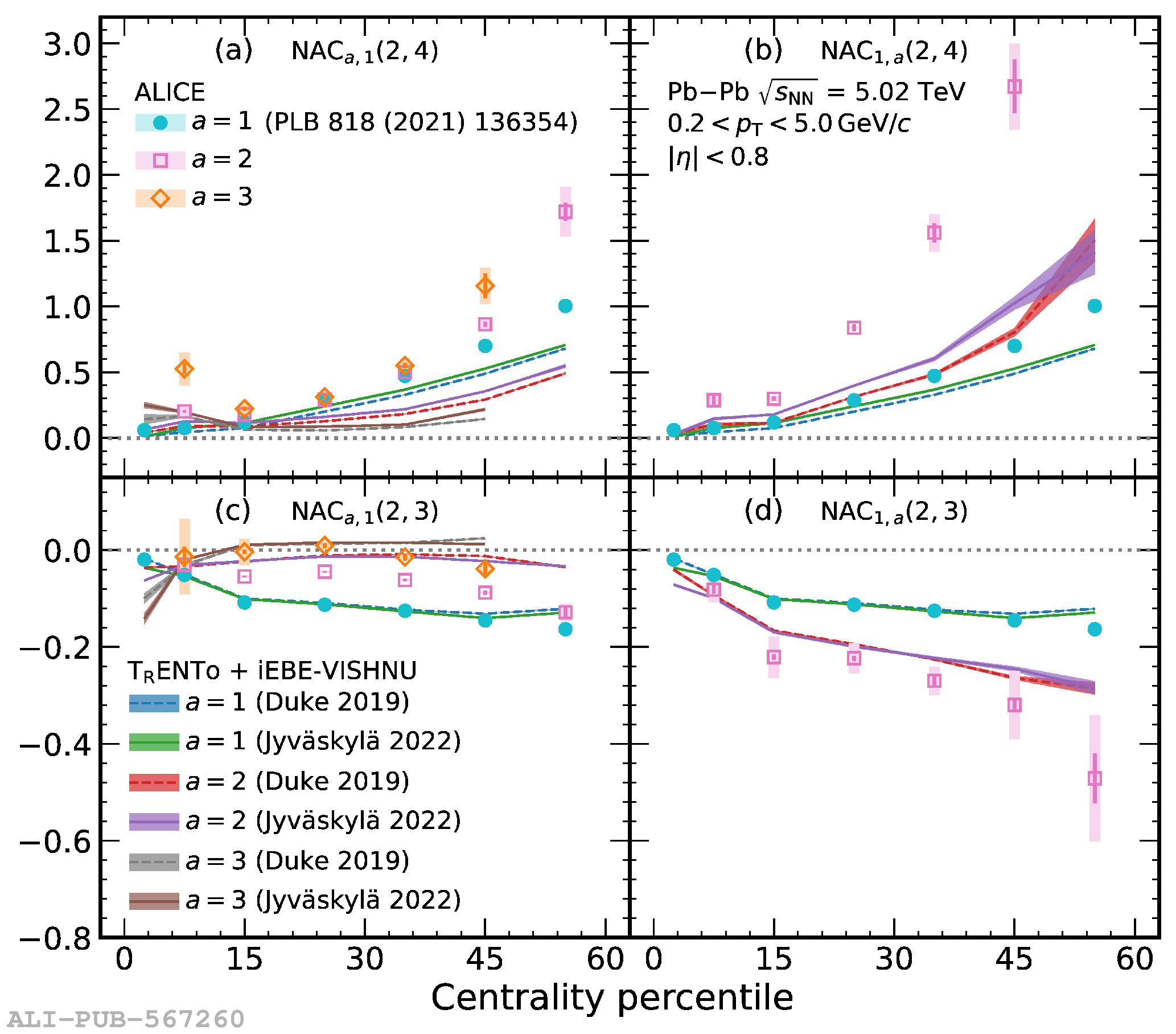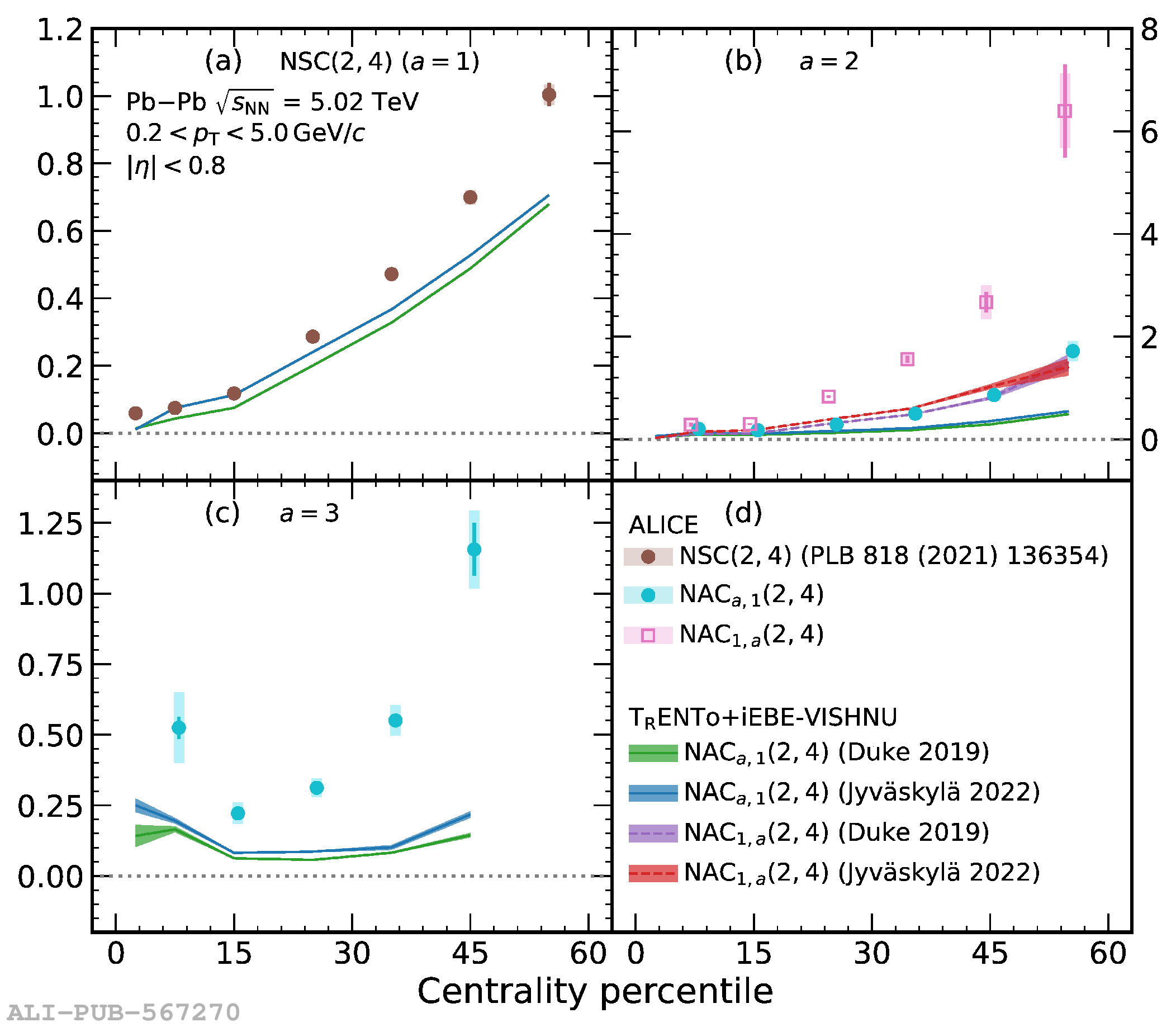The correlations between different moments of two flow amplitudes, extracted with the recently developed asymmetric cumulants, are measured in Pb$-$Pb collisions at $\sqrt{s_{\rm NN}} = 5.02$ TeV recorded by the ALICE detector at the CERN Large Hadron Collider. The magnitudes of the measured observables show a dependence on the different moments as well as on the collision centrality, indicating the presence of non-linear response in all even moments up to the eighth. Furthermore, the higher-order asymmetric cumulants show different signatures than the symmetric and lower-order asymmetric cumulants. Comparisons with state-of-the-art event generators using two different parametrizations obtained from Bayesian optimization show differences between data and simulations in many of the studied observables, indicating a need for further tuning of the models behind those event generators. These results provide new and independent constraints on the initial conditions and transport properties of the system created in heavy-ion collisions.
Phys. Rev. C 108 (2023) 055203
HEP Data
e-Print: arXiv:2303.13414 | PDF | inSPIRE
CERN-EP-2023-047
Figure group


